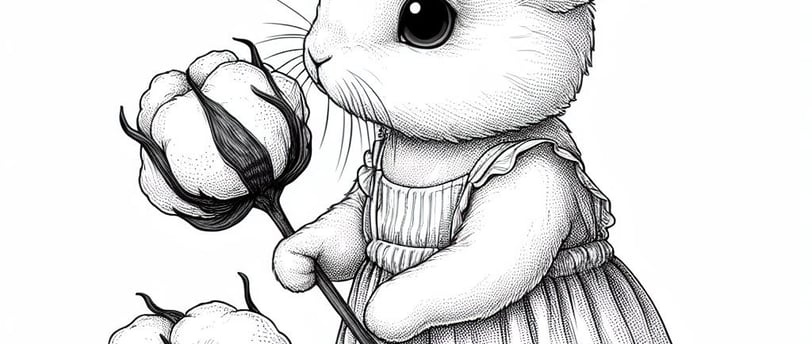How Can Investing in Cotton Commodities Enhance Your Portfolio?
Dive into cotton commodity investing to understand how weather, global demand, and technological advancements influence cotton prices. Learn about investment avenues like futures, ETFs, and stocks, and discover the risks and rewards associated with diversifying your portfolio with cotton.


Welcome to the world of cotton commodity investing, a sector with a rich history and substantial economic impact. In this guide, we will provide you with an introduction to the basics of cotton market dynamics, including the factors that influence prices and the various investment avenues available to you. Whether you are a seasoned investor or someone looking to diversify their portfolio with agricultural commodities, this article will serve as your first step towards cotton market mastery.
The Basics of Cotton Market Dynamics
Before diving into the world of cotton commodity investing, it is essential to understand the factors that influence cotton prices. These factors include:
1. Weather Conditions
Weather conditions play a significant role in cotton production. Factors such as rainfall, temperature, and humidity can affect the quality and quantity of cotton crops. Adverse weather conditions, such as droughts or hurricanes, can lead to lower yields and subsequently drive up prices. On the other hand, favorable weather conditions can result in higher yields and lower prices.
2. Global Demand
The demand for cotton is influenced by various factors, including population growth, fashion trends, and economic conditions. Countries with a large textile industry, such as China and India, are major consumers of cotton. Changes in global demand can have a significant impact on cotton prices.
3. Technological Advancements
Technological advancements in cotton farming, such as genetically modified seeds and mechanized farming techniques, have increased productivity and efficiency. These advancements can lead to higher yields and lower production costs, ultimately affecting cotton prices.
Investment Avenues in the Cotton Market
Now that we have explored the factors that influence cotton prices, let's delve into the various investment avenues available in the cotton market:
1. Futures Contracts
Futures contracts are a popular way to invest in cotton commodities. These contracts allow investors to buy or sell a specified quantity of cotton at a predetermined price and date in the future. Futures contracts provide an opportunity to profit from price fluctuations in the cotton market without physically owning the commodity.
2. Exchange-Traded Funds (ETFs)
Exchange-Traded Funds (ETFs) that track cotton prices offer another investment avenue. These funds allow investors to gain exposure to the cotton market without the need for direct commodity ownership. ETFs provide diversification benefits and can be bought and sold on stock exchanges, making them more accessible to individual investors.
3. Cotton Company Stocks
Investing in cotton company stocks is another way to gain exposure to the cotton market. By investing in companies involved in cotton production, processing, or trading, investors can participate in the potential growth of the industry. It is important to conduct thorough research and analysis before investing in individual stocks.
4. Commodity Index Funds
Commodity index funds offer investors exposure to a basket of commodities, including cotton. These funds aim to replicate the performance of a specific commodity index and provide diversification benefits. Investing in commodity index funds can be a convenient way to gain exposure to the cotton market without the need for active management.
Risks and Rewards of Cotton Commodity Investing
As with any investment, cotton commodity investing comes with its own set of risks and rewards. It is crucial to understand these factors before entering the market:
Risks:
- Price Volatility: Cotton prices can be highly volatile, influenced by various factors such as weather conditions, global demand, and geopolitical events. Investors should be prepared for significant price fluctuations.
- Weather Risks: Adverse weather conditions, such as droughts or hurricanes, can lead to lower yields and higher prices. Investors should consider the potential impact of weather risks on their investment.
- Market Risks: The cotton market is subject to supply and demand dynamics, which can be influenced by global economic conditions, trade policies, and geopolitical factors. Changes in these factors can impact cotton prices.
Rewards:
- Diversification: Investing in cotton commodities can provide diversification benefits to a portfolio. The performance of cotton commodities may not always correlate with other asset classes, reducing overall portfolio risk.
- Potential for Profit: Cotton commodity investing offers the potential for profit through price appreciation or trading strategies. Investors who can accurately predict price movements can benefit from favorable market conditions.
- Inflation Hedge: Commodities, including cotton, have historically served as a hedge against inflation. As the price of goods and services rise, the value of commodities may also increase.
Conclusion
Cotton commodity investing offers investors an opportunity to participate in the lucrative world of agricultural commodities. By understanding the factors that influence cotton prices and exploring the various investment avenues available, investors can make informed decisions and potentially benefit from this dynamic market. However, it is crucial to assess the risks and rewards associated with cotton commodity investing and diversify investments accordingly. With thorough research and careful consideration, investors can navigate the cotton market and potentially achieve their investment goals.
